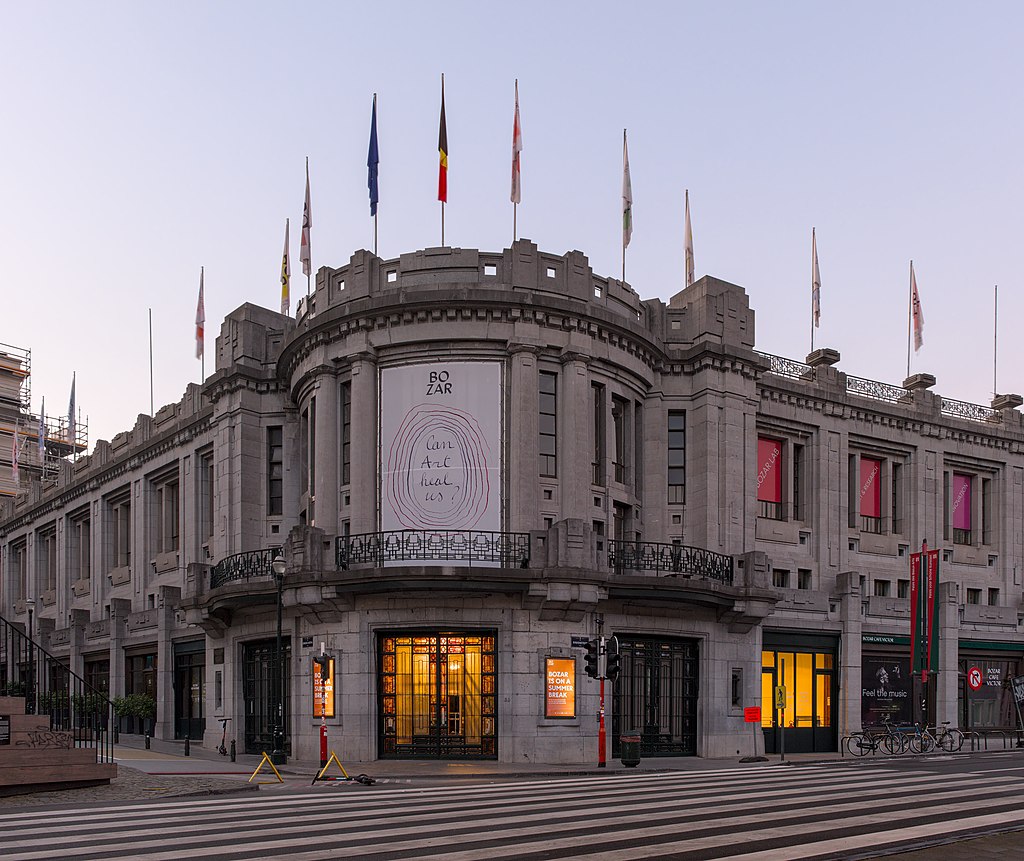Visiting Brussels is a bit like going on an architectural treasure hunt. The city bursts with buildings of all different kind of styles, yet some of the most striking ones were designed in the Art Deco style. This architectural style was very present from the 1920’s until 1940 and embraced the technological innovations which were so numerous during that time.
Although people often tend to confuse Art Deco and Art Nouveau, both styles are in fact very different. Not only did the Art Nouveau movement start a lot earlier – from the 1890’s onwards – but the characteristics also differ quite a lot. Where Art Nouveau architects found their inspiration in nature, which resulted in lots of curvy forms, the Art Deco movement saw things in a more modern way. Buildings were more straight-forward, more abstract, more realistic one might say. In Belgium Art Deco was quite influential, which resulted in a great number of nowadays famous examples of the architectural style. We had a look at Brussels and selected our three favorite buildings, even though it was a difficult call.
1. Villa Empain
One of the best examples of Art Deco architecture in Belgium might just be Villa Empain. The house, commissioned by Baron Louis Empain, was designed by the Swiss architect Michel Polak. The villa was built between 1930 and 1934 on the edge of the Bois de la Cambre in Ixelles. Even though Louis Empain invested quite a lot in the construction, he mainly resided in Canada and therefore gifted the building to the Belgian state in order to turn it into a museum. During the war, it was occupied by the Germans, only to function as a Soviet Union embassy once the war was over. The Empain family was not very pleased by this, rebought the place in the sixties and then resold it to Harry Tcherkezian, the Armenian-American tobacco entrepreneur. Radio-Télévision-Luxembourg (RTL) used it as their headquarters for quite a while but as from 1995, Villa Empain was left unoccupied. Finally, in 2007, the Boghossian Foundation acquired the building, restored it and reopened it to the public as a cultural center and museum.
Nowadays, you can still visit the Villa – the exhibitions on show change regularly and different events are held in the house throughout the year. One of the most remarkable assets might be the pool behind the building, which instantly make you want to take a dip.
2. Palais des Beaux-Arts
The Palais des Beaux-Arts, or the Center for Fine Arts, in Brussels is a masterpiece made by the one and only Horta. Victor Horta, born and raised in Belgium, might be one of the most famous architects the country has ever known. In the first place, he is mainly associated with the Art Nouveau movement rather than with Art Deco. When taking a walk through Brussels, you will be able to spot quite a lot of his work: Hôtel Solvay, Hôtel Van Eetvelde, Maison Horta… Yet during the 1920’s, he took on a different kind of project: the Palais des Beaux-Arts. And given the timing, he did not use his typical Art Nouveau style, yet rather opted for a more modern approach. This resulted in a true Art Deco palace, which still lies at a stone’s throw from the Royal Palace and the Central Station. Horta developed the building as a city-within-a-city, with a variety of halls, entrances and stairways.

The Palais des Beaux-Arts contains a large concert hall, a recital room, a chamber music room, lecture rooms and a vast gallery for temporary exhibitions. As the King’s palace was just around the corner, the height of the building had to be contained as to not restrict his majesty’s view on the skyline of Brussels. That is why a big part of the Center for Fine Arts was built underground. Contrary to a lot of other constructions, the use of the Palais des Beaux-Arts did not change a lot over time. It is now called Bozar and you can still visit exhibitions held in the museum, there is a restaurant on-site and you can even catch a movie in this historical venue.
3. L’Archiduc
As we have spoken about two museums already, let’s move on to something else: a bar, by all means. Located in the heart of the now very trendy Dansaert neighborhood, the Archiduc is definitely not a café like the others. The bar, designed by architect F. Van Ruyskenvelde, opened its doors for the first time in 1937. In that time, it was run by Madame Alice and visited mainly by brokers and their secretaries. It was the perfect place to discuss delicate subjects, really, thanks to the small wooden cabins, offering clients a secluded space so that they could safely talk business. Alice gave up her establishment in the 1950’s and when Stan Brenders took over the bar, jazz was what Archiduc was all about. Brenders played the now famous piano dating back to 1929 and the bar became an institution, a true Brussels symbol. If you fancy a historical bar crawl or if you want to attend an intimate concert in one of Brussels’ most famous cafés, this is where you want to go.
The façade of the building is worth a picture in itself, let alone the interior.
Thanks to a tasteful renovation, most of the original décor has been preserved. Think dark wooden paneling, velvet chairs, chrome detailing and delicate lighting. One of the most aesthetically pleasing bars we have ever visited, that is for sure.













